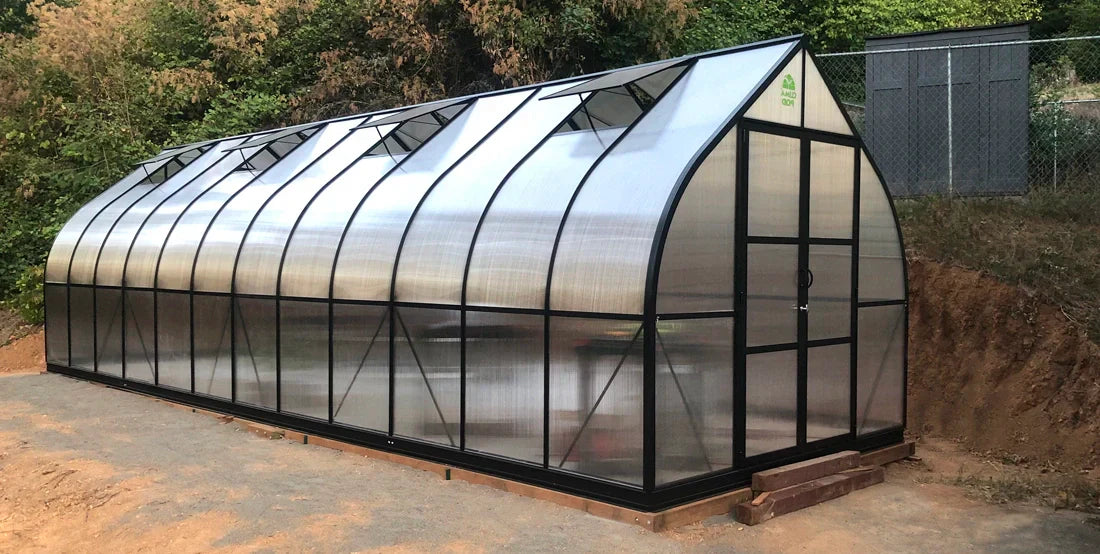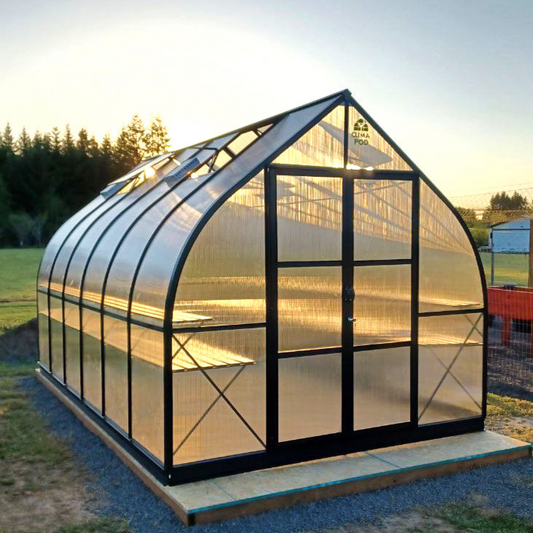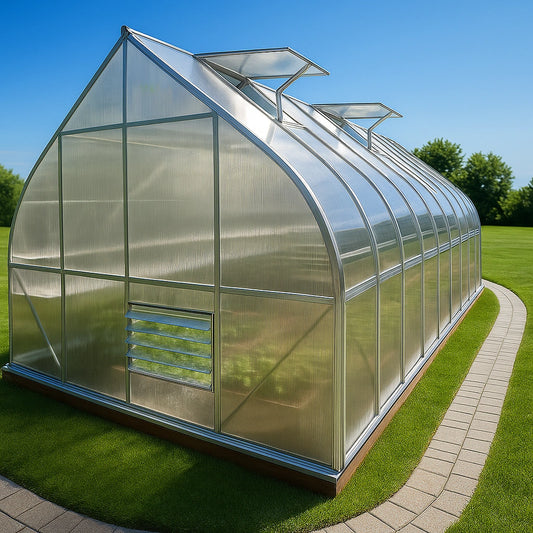
Key Features of Aluminum Greenhouses Every Gardener Should Know
Aluminum Greenhouse Features Every Gardener Should Know
Aluminum-framed greenhouses have become increasingly popular among gardeners in the U.S. and for good reason. They offer a modern look, excellent durability, and flexibility in design that wooden or steel frames simply can't match.
Whether you’re a seasoned grower or a weekend gardening enthusiast, understanding the advantages of aluminum greenhouse structures can help you choose the best option for your outdoor space.
Why Choose Aluminum Over Steel or Wood?
Aluminum offers several benefits over traditional materials:
- Lightweight & Flexible: Aluminum is easy to work with and ideal for creating various greenhouse shapes.
- Corrosion-Resistant: Naturally protected by an oxide film, aluminum doesn’t rust, making it perfect for damp environments.
- Low Maintenance: Unlike steel, which can corrode, or wood, which may rot or warp, aluminum maintains its integrity for decades.
- Optional Protective Coatings: For added resilience, aluminum frames can be anodized or painted with weather-resistant coatings, extending their lifespan to 40+ years. In harsher climates, repainting may be needed every 10 years.
Aluminum Greenhouse Frame Shapes
One of aluminum's biggest strengths is design flexibility. With a wide variety of available profiles, gardeners can choose frame shapes that suit both function and aesthetics:
-
Lean-To (Pitched Roof)
- Attaches to a building wall
- Budget-friendly and compact
- Great for winter gardens or starter greenhouses
-
Gable Roof Greenhouses (e.g., ClimaPod Spirit, Virtue, Passion)
- Traditional “house-shaped” design
- Allows for tall crops and vertical growing
- deal for glass glazing
-
Arched Frame Greenhouses (e.g., Arched Series)
- Modern look with strong snow load resistance
- Excellent natural light diffusion
- May have “dead zones” with limited vertical space
Gable ("Drop-shaped") and arched styles are the most popular for growing vegetables, flowers, and taller plants like tomatoes or peppers. Each style supports efficient space usage and strong seasonal performance.
DIY Aluminum Greenhouse Assembly Tips
Building your aluminum greenhouse can be a rewarding project. Here are a few installation tips to ensure success:
- Select a location with full sun and minimal shading.
- Prepare a level, stable base before starting construction.
- Choose a foundation type — either a concrete strip or a lightweight pile foundation depending on your structure’s size.
- Follow all assembly instructions carefully. All the ClimaPod kits include UV-resistant polycarbonate panels for optimal insulation and light.
Once built, your greenhouse will need proper care: ventilate regularly, clean interior surfaces, and disinfect seasonally to prevent pests and mold.
What Makes a Quality Aluminum Greenhouse?
When shopping for an aluminum greenhouse, look for the following key features:
- Durable Frame Pitch: No more than 25–26 inches (650–670 mm) between support elements for glass; up to 39 inches (1 meter) for polycarbonate.
- No-Weld Technology: Ensures frame integrity and simplifies maintenance.
- Wide Doors: Double-door access makes it easier to bring in supplies like soil, plants, or wheelbarrows.
- Ventilation: Automatic openers are a big plus for managing airflow.
- Rain Gutters (for glass models): Help collect and redirect rainwater.
Standard Greenhouse Dimensions:
- Width: 9–10 ft (2.75–3 m)
- Length: 13–26 ft (4–8 m)
These dimensions strike a balance between growing capacity and ease of setup.
Final Thoughts
Aluminum greenhouses are a smart long-term investment for gardeners who value durability, aesthetics, and ease of maintenance. With multiple shapes and configurations available, there’s a perfect aluminum-frame option for every backyard or homestead.











